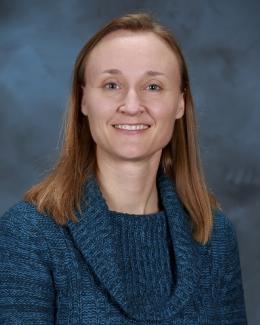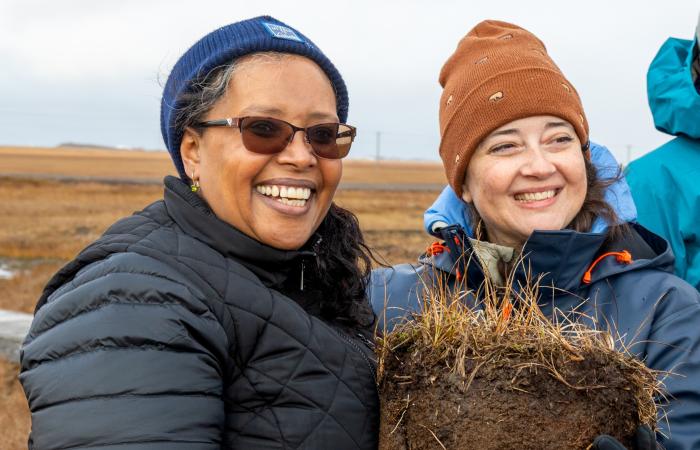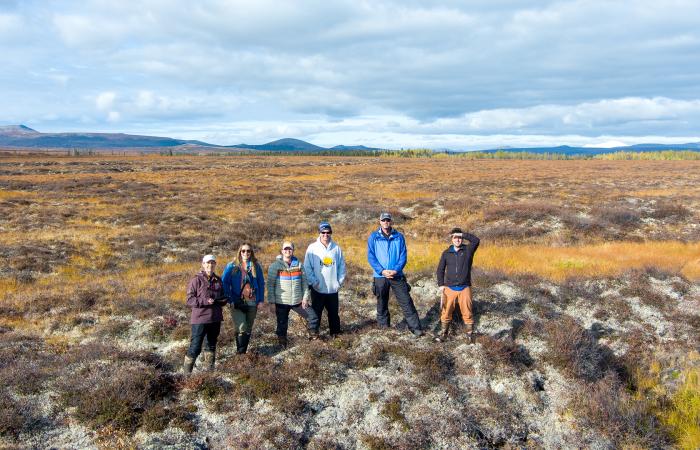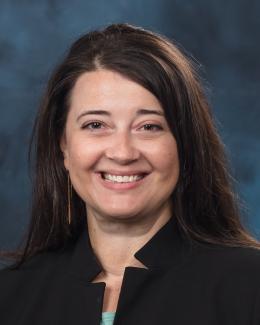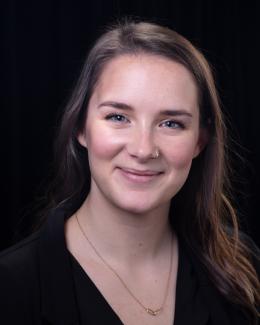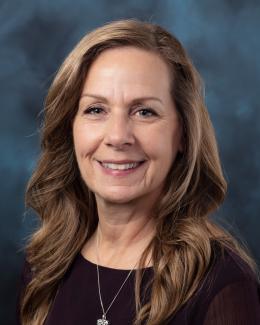When the challenges of the day could include polar bears, harsh weather and navigating the remote Arctic tundra, safety becomes central in a whole new way.
The team members of the Next Generation Ecosystem Experiments Arctic project, or NGEE Arctic, led by Oak Ridge National Laboratory have developed protocols that not only keep researchers physically safe, but also protect psychological and emotional safety by fostering a respectful, harassment-free environment. This holistic approach to safety has built a culture of trust and inclusion that serves as an exemplar for the broader scientific community.
“It’s not just about what we do, but how we do it,” says ORNL’s Colleen Iversen, NGEE Arctic director. She presented about the project’s foundational focus on safety and inclusivity at the DOE Biological and Environmental Research Advisory Committee meeting in October. She shared insights, challenges and opportunities in leading an interdisciplinary project that includes more than 140 scientists across the national lab system.
Iversen recently had the opportunity to share Alaska firsthand with Dr. Asmeret Asefaw Berhe, director of the Office of Science. Berhe toured an NGEE Arctic field site outside of Utqiaġvik, the northernmost city in Alaska on the rim of the Arctic circle.
Iversen and colleagues Bob Bolton and Stan Wullschleger talked about NGEE Arctic’s history, vision and safety culture as they dug up a shovel’s worth of soil so that Berhe could touch the frozen permafrost. As a soil biogeochemist, she was delighted to inspect the newly dug sample.
Berhe is the first climate scientist to lead the Office of Science and her visit was timed to coincide with Climate Week in September. Before the stop in Alaska, she began the week in the peatlands of Minnesota visiting the ORNL-led Spruce and Peatland Responses Under Changing Environments, or SPRUCE, site. There she talked with a team of ORNL scientists and toured the experimental enclosures, which warm the peat bog above- and belowground to simulate potential future climates.
Berhe was impressed with both SPRUCE and NGEE Arctic, commenting that ORNL has brought the sophistication of the national laboratory complex to the fields of terrestrial ecology and climate science.
To capture Berhe’s experience, experts in digital media and photography traveled with her. The experience was eye-opening for them, especially the Alaska portion of the trip.
Bear spray, singing and satellite devices
Brittany Cramer and Genevieve Martin of ORNL’s Communications Division travelled to Utqiaġvik for Berhe’s visit and then on to Nome with Iversen and Bolton to get footage of research happening at field sites on Alaska’s Seward peninsula to the south. Their safety training began before they left Oak Ridge as BESSD conducts pre-travel safety briefings for all fieldwork trips.
The pre-trip safety meeting covered everything from what to pack (waterproof winter coat, hot hands, sturdy boots, snacks) to what to expect (no cell phone service, $14 boxes of cereal in the local grocery store, no paved roads). Bear safety was a key topic, with polar bears in the north and grizzlies a concern in Nome.
Standard precautions include taking a bear guard on trips outside Utqiaġvik as polar bears are a protected species—and one undeterred by bear spray. NGEE Arctic secures the services of locals who serve as bear guards, authorized to carry guns and shoot a polar bear if needed. For the trip with Berhe, the group did not venture far enough from their vehicles to need a bear guard.
Preventative measures in Nome include bear spray, vigilance and purposely making noise when hiking the tundra. Cramer and Martin played music over speakers and sang as they captured drone footage of field sites on the Seward peninsula. It was all good music, of course. That was agreed upon by the group at the morning meeting as part of the psychological and emotional aspect of safety protocols.
Every morning began with a “tailgate” safety briefing at the foot of their large, dusty trucks before journeying to the field sites, which can be two to three hours away from town. The team would circle up and go through safety reminders, check gear and answer questions meant to establish a comfortable work environment for all. Are you OK with singing? Are you OK with cussing? Are you OK with talking politics? Team leads ticked down the list, ensuring transparency and accord before setting out.
“Including these conversations in the safety briefing is important,” said Bolton, NGEE Arctic’s deputy of operations. “It aligns with the values we’ve established for the project and it facilitates open communication and goodwill among team members who act as each other’s lifelines at remote field sites that are hours from emergency responders.”
Every member of the group had the ability to call “stop work” – where the entire team stops to reassess a situation before continuing – or to say they weren’t comfortable with any physical or mental obstacles along the way. Individuals could redirect the group as needed with no further questions asked.
The terrain was rough outside Nome. The soggy ground was covered with so much moss that hikers couldn’t know whether they were about to step on a ball of moss or a moss-covered rock. Every step sank into the tundra, which Martin described as “walking on a waterbed.” At one point, Cramer took a step and her foot plunged through the moss into mud up to her thigh. That’s called a soaker by the regulars. She pulled herself out and they hiked on with no issues beyond some extra mud squelching inside her boot.
“I felt extremely safe the whole time,” Cramer said.
“They really had our backs,” Martin agreed.
The pair had short-range radios and a satellite-connected InReach device. The group checked in with designated contacts in Oak Ridge and Fairbanks, Alaska, to share their destination for the day and expected return time. Those contacts would send help if the group didn’t check in at the end of the day as planned.
Contingency planning also covered personal medical needs, which were handled with respect for both safety and privacy. Each team member filled out a card about any conditions and sealed it in an envelope in their backpacks. If needed, the sealed information would be handed directly to medical professionals.
“The NGEE Arctic team is exceptional at keeping safety first as they do their science,” Cramer said. “Everyone should model after them. I’d go with them again in a heartbeat.”
